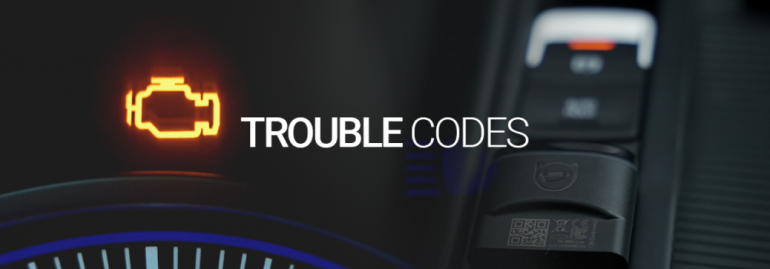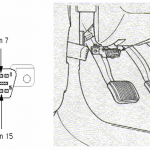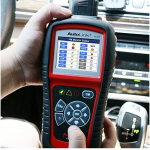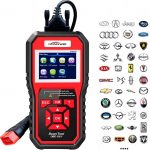When it comes to interpreting a vehicle diagnostic code, you have many options. Whether you’re looking for information about OBDII codes or manufacturer-specific codes, you’ll be glad you did! In this article, you’ll learn about the basics of OBDII codes and how to interpret a specific code. Read on to learn more about the various types of diagnostic codes that your car may display. But how do you tell if one is a problem?
OBDII codes
OBDII codes are a part of the self-diagnostic system of your car. These are also known as Check Engine Light Codes or Diagnostic Trouble Codes, and can tell you if there is a problem with your vehicle. Mechanics and drivers alike will need to know how to interpret these codes. If you don’t know what they mean, here are some basic steps to follow.
First, you need to understand what each OBDII code means. The code is made up of five characters, the first of which is a letter. The second and fourth digits identify which system of your car is affected, and the last two represent the fault designation. For example, a code “8” means that your transmission has a problem; “9” indicates that a sensor has failed.
If your car is showing multiple OBDII codes, you may need to visit a mechanic. An OBDII code can mean different problems. If your vehicle is leaking coolant, you might need to replace the evaporative system. Alternatively, you may need to replace a faulty part. This is where the code comes in. The diagnostic trouble code may be generated by the vehicle manufacturer or by the Society of Automotive Engineers (SAE).
Once you know the code, you can either check the DTC list or find an OBDII connector underneath your dashboard. Some Bluetooth OBD2 Scanners come with bundled apps. The ones that come with an APP may have better customer support and compatibility. They may also come with additional features, like a fault alert. OBDII code readers work by plugging into the 16-pin OBDII diagnostic connector, which is located under your dashboard. To use one, you will need to purchase a special adapter for vehicles built before 1996.
The OBD system was introduced in the early 1980s and initially turned on a malfunction indicator light when a malfunction was detected. But the codes were not universal and varied from manufacturer to manufacturer. It was difficult for mechanics to diagnose a vehicle problem. Eventually, the OBDII specification became mandatory for all new cars in the United States. The standard now provides a universal language for vehicle diagnostic codes, and hand-held scanners are available for home use.
Vehicles equipped with OBDII diagnostic technology are able to diagnose a wide range of problems. The P0122 code is indicative of a faulty TPS (thermal pressure sensor) in the engine, which may be triggered by a low voltage in the bank 1 sensor. A visual check of the wiring could reveal any problems. The P0131 code is triggered by a low voltage condition in bank 1, sensor number 1.
Interpreting a vehicle diagnostic code
When you receive a diagnosis of a problem with your vehicle, you should know how to interpret a vehicle diagnostic code. The code itself is a series of numbers that tells the mechanic the problem is with a specific component or subsystem of the vehicle. A “9” means a transmission problem, while an “8” means a sensor failure. When interpreting a vehicle diagnostic code, you must first determine whether or not the problem is serious.
The first character in the DTC indicates the system category. There are two-digit codes for each system, each of which contains a letter and a number. While common codes are designed to meet regulation requirements, unique codes are designed for specific features or extras. However, there is one common element in all of these codes: they help diagnose a car’s problem. For example, the first digit in the P0219 code signifies a powertrain problem.
In addition to OBD-II and J1939 codes, there are also codes for diesel engines and heavy-duty trucks. J1939 codes are similar to OBD-II codes, but they’re designed for mechanics and technicians to interpret. They also trigger DTC codes, which appear as warning lights on your dashboard. For this purpose, you can use a scan tool. Most scan tools will show you one-line descriptions of code definitions, but a good tool will give you a comprehensive list.
A vehicle’s onboard diagnostics system records problems as unique codes called DTCs. The P0201 code, for example, indicates that the injector circuit is malfunctioning. Another example is a P0202 code. If this code appears on your dashboard, it indicates that the injector circuit is faulty. This code is important because it helps you to identify the problem. Once you understand the meaning of the code, you’ll be able to fix the problem quickly and efficiently.
While some codes are manufacturer-specific, others are generic and need not be interpreted. The P0300 DTC code indicates that there is a problem with the engine, transmission, or fuel. This code is typically triggered in conjunction with the P0301-P0308 codes. A J1939 code is four characters long and represents a specific system. You should always contact a mechanic for a diagnosis as soon as possible.
On-board diagnostics systems have been fitted to vehicles for many years. These on-board computers monitor vehicle performance and generate codes that identify specific issues. A simple understanding of DTCs will help you repair or diagnose a problem. There are hundreds of DTCs that can be generated by modern vehicles. To interpret a specific DTC, you should refer to the manufacturer’s manual or look at a diagnostic tool.
If you’re unfamiliar with DTC codes, you can use a universal DTC list to get the details of a specific fault code. A basic code reader provides a five-character code, but a more robust scanner will provide a full definition of the code and fault alerts. It’s also important to use the right scan tool for your vehicle model. Not all diagnostic tools are compatible with all vehicles, and it’s important to find the right tool for your specific vehicle model to avoid wasting time and money.
Manufacturer-specific codes
Depending on the type of problem, a particular diagnostic trouble code may indicate several things. Typically, there are two types of DTC codes: generic and manufacturer-specific. Generic codes refer to problems that are common across the entire vehicle fleet, while manufacturer-specific codes focus on specific systems and features. While many generic codes have very similar definitions, they are also important for the diagnosis of vehicle issues. While some codes are simply letters, others can be made up of several different parts of the car.
Fortunately, there is an easy way to tell if a vehicle’s computer is experiencing a problem. A manufacturer-specific diagnostic code, or DTC, can appear on your vehicle’s computer screen, and it’s important to understand the meaning behind the code. DTCs are not necessarily a sign that the car needs to be repaired, but rather, they indicate what tests the mechanic should perform on the vehicle to resolve the problem.
While non-critical codes can also indicate a problem, they do not usually require immediate action. They typically aren’t serious enough to cause damage to the vehicle, but they can still be dangerous for the driver and passengers. Most of these codes begin with “P” or “C,” which denote critical systems. Examples of critical codes include brake failure, engine overheating, and fuel leaks. Non-critical codes, on the other hand, don’t necessarily require immediate action, but they still require a technician’s attention.
For example, if the ‘Check engine’ light comes on when a car is malfunctioning, it’s a DTC. Oftentimes, DTC codes are used to diagnose problems. The codes are stored on a car’s computer, so that maintenance personnel can follow up and correct the problem. The DTC code can be used to diagnose problems with a diagnostic tool. The information obtained by this method can also be used to fix a vehicle’s engine.
DTC codes, or Diagnostic Trouble Codes, are codes used to identify and communicate problems in a vehicle. Some codes are generic, while others are manufacturer-specific. They are part of a vital safety infrastructure in a vehicle, ensuring proper operation. This is why DTCs are important. When a car malfunctions, it’s important to diagnose the problem right away, and this is where an integrated fleet management system can help.
A code P0430 means the catalytic converter is underperforming. The catalytic converter is responsible for processing the exhaust gases, but in modern vehicles, the conversion process is not complete. Many vehicles today have variable valve timing systems, which change the angle at which the camshafts are positioned relative to the crankshaft. If this fails, a code P0011 will appear on your dashboard. It’s important to visit an ASE-certified technician to diagnose the problem correctly.






